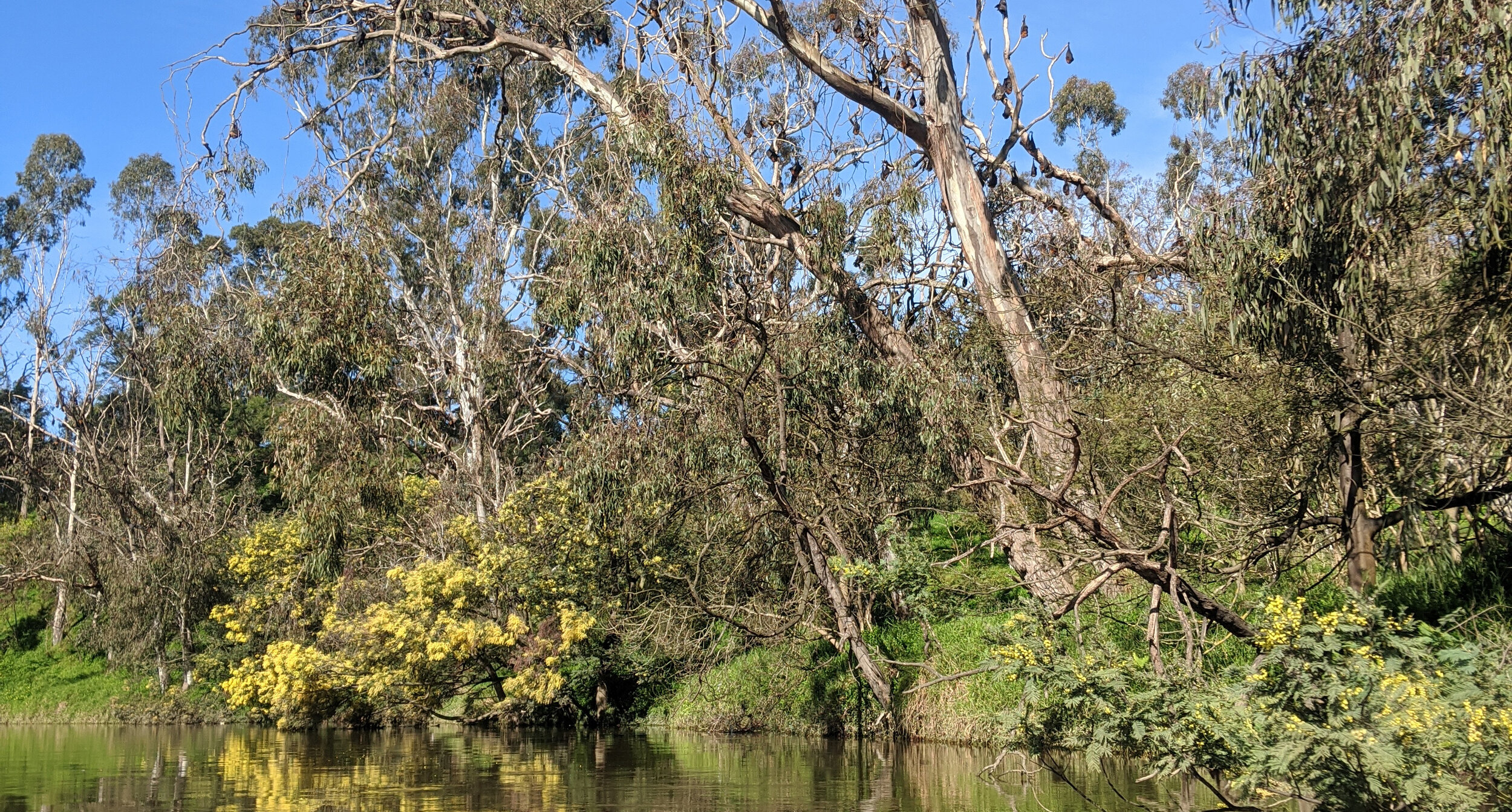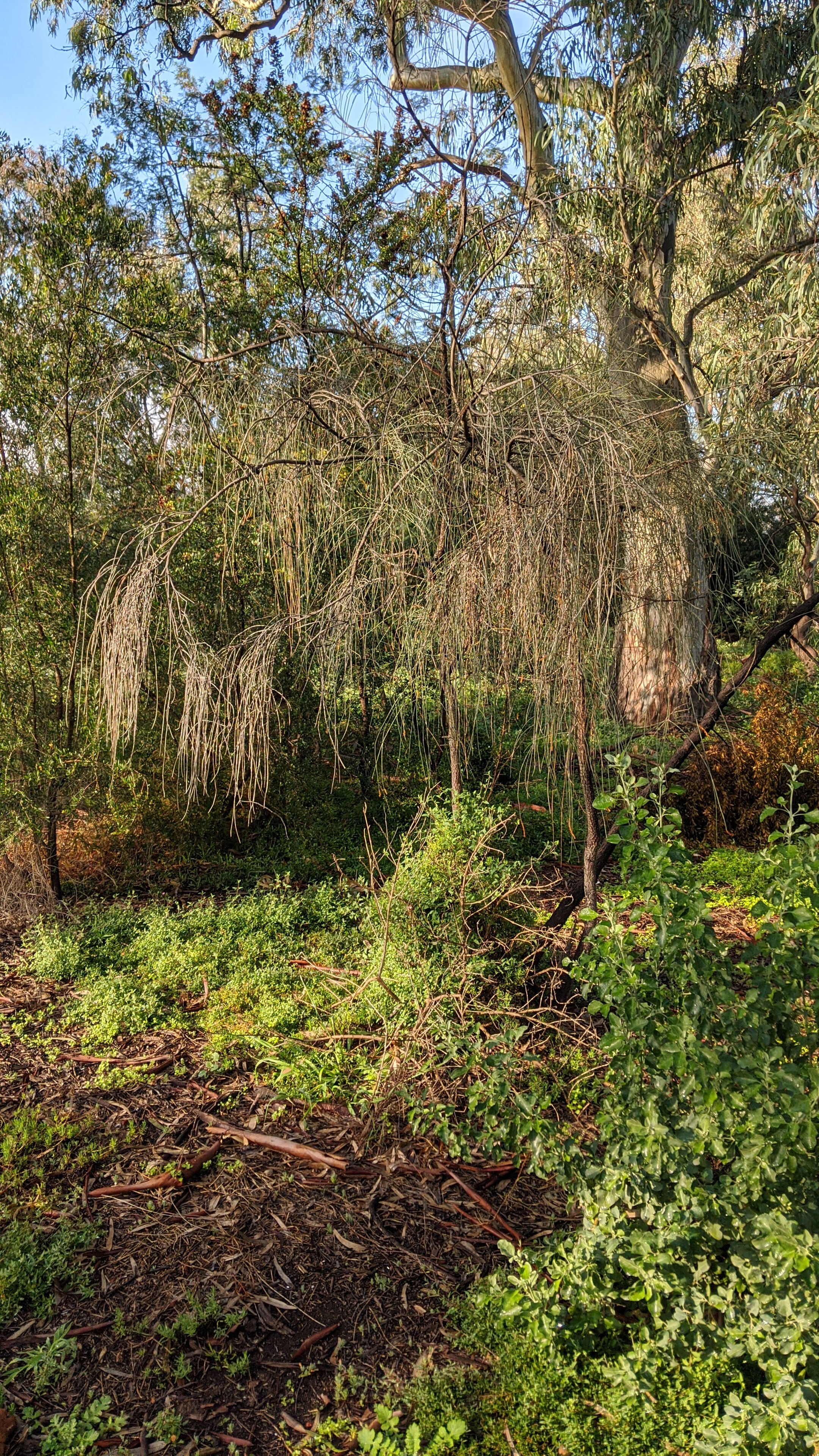Sonaflora Drift Yarra
Four music scores and five sound works created using plant species documented across various green spaces across the City of Yarra during the various Covid 19 lockdowns 2020 / 21 . These sites include the area within and around Abbotsford convent and the area around Bellbird Reserve on Yarra which is the main current home of Melbournes Flying Fox population. All of these works are accessible by foot apart from the Golden Wattle Score at Bellbird reserve which is accessed easiest by Kayak. These works have been created to be experienced in real life. utilizing Zome , https://www.zome-ar.com/ an app that lets the user access site specific digital information, in this case music created for the plants at the site of each plants documentation. Just follow Dylan Martorell on Zome or use the map guide below to find the plants. A link for the Zome App is to be found after the series of music scores and plant documentation.
https://www.google.com/maps/placelists/list/qVtYJe5OKh0PwEKud6MpDP9rafMrSw

Acacia Pycnantha, Bellbird Reserve, Kew



Recording the Flying Foxes at Bellbird Reserve and documenting Golden Wattle Blossom

Roldan Petasitis , Abbotsford Convent


Roldan Petasitis , Abbotsford Convent

Eucalyptus camaldulensis , Abbotsford.

Eucalyptus camaldulensis , Abbotsford.

Acanthus mollis, Abbotsford Convent

Acanthus mollis, Abootsford Convent

photo - Jason Hood
Sonaflora Moreland Four music scores and four sound works created using plant species documented across various green spaces across the City of Moreland during the various Covid 19 lockdowns of 2020/21. These included various sites along the Merri Creek in North Fitzroy, Brunswick East, Coburg and Fawkner. These works have been made to be experienced in real life using the augmented reality app Zome, Zome (zome-ar.com) an app that lets the user access site specific digital information, in this case the music that has been created for the plants used in the music scores which can be accessed at the exact site of each plant. This project has been designed to experience the plant score music at the site of each plant.
The plants can also be found at the map links below .
Just follow Dylan Martorell on Zome or use the map guide below to find the plants.
https://www.google.com/maps/placelists/list/qVtYJe5OKh0PwEKud6MpDP9rafMrSw

Casuarina equisetifolia
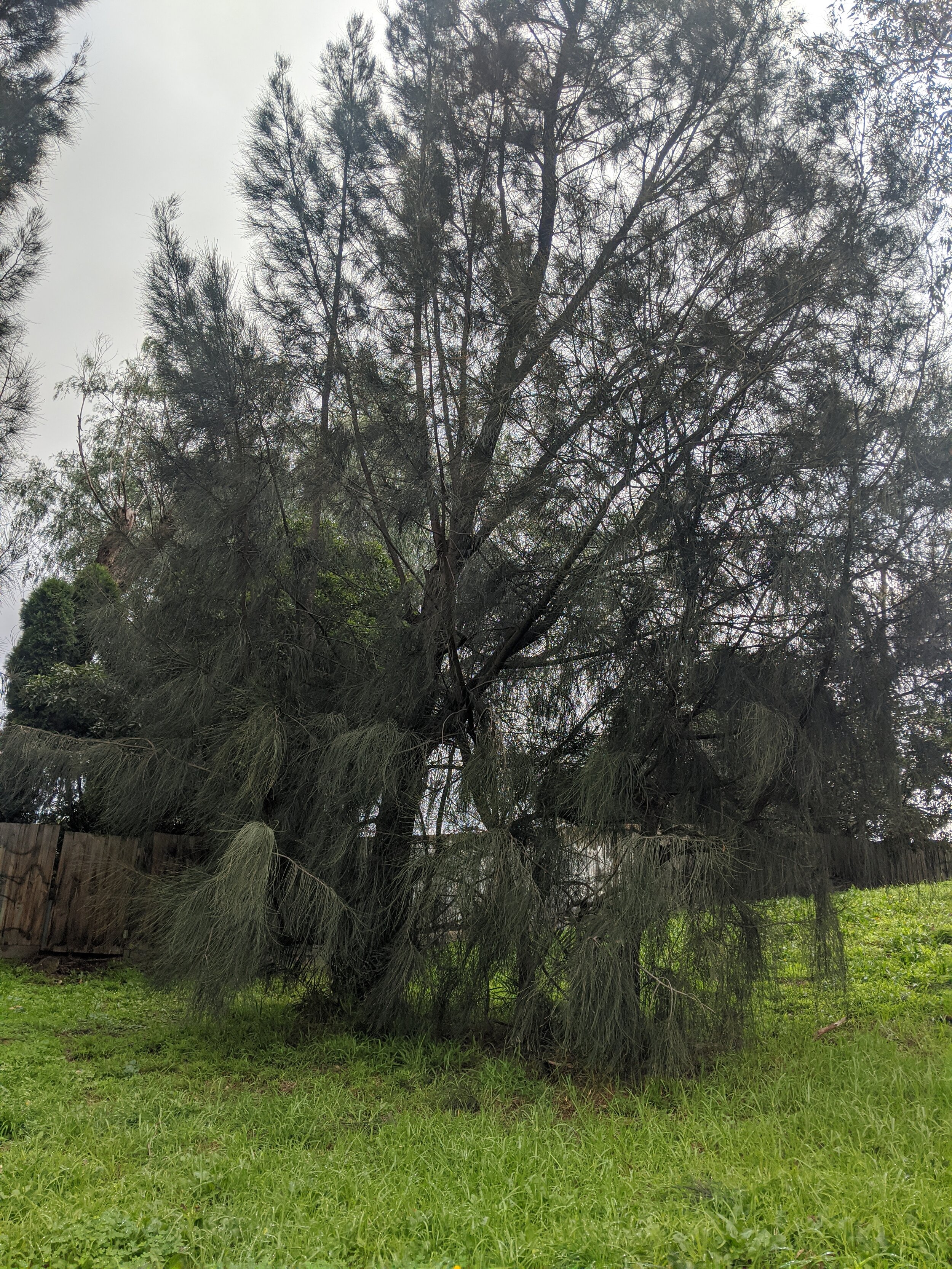


Casuarina equisetifolia score work in progress

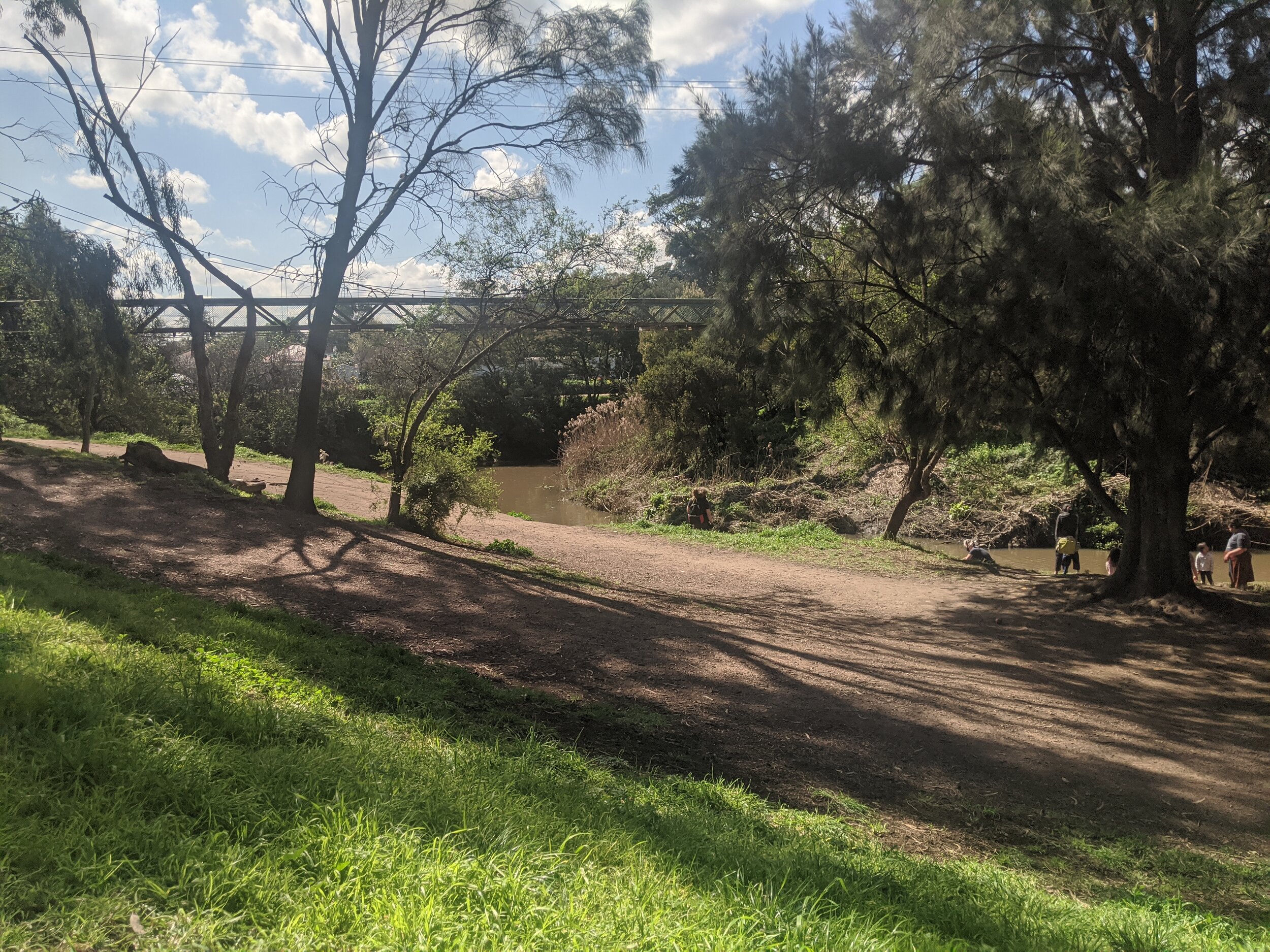
Casuarina equisetifolia , Coburg

Clematis (Old Mans Beard) , Bababi Djinanang , Merri Creek Fawkner

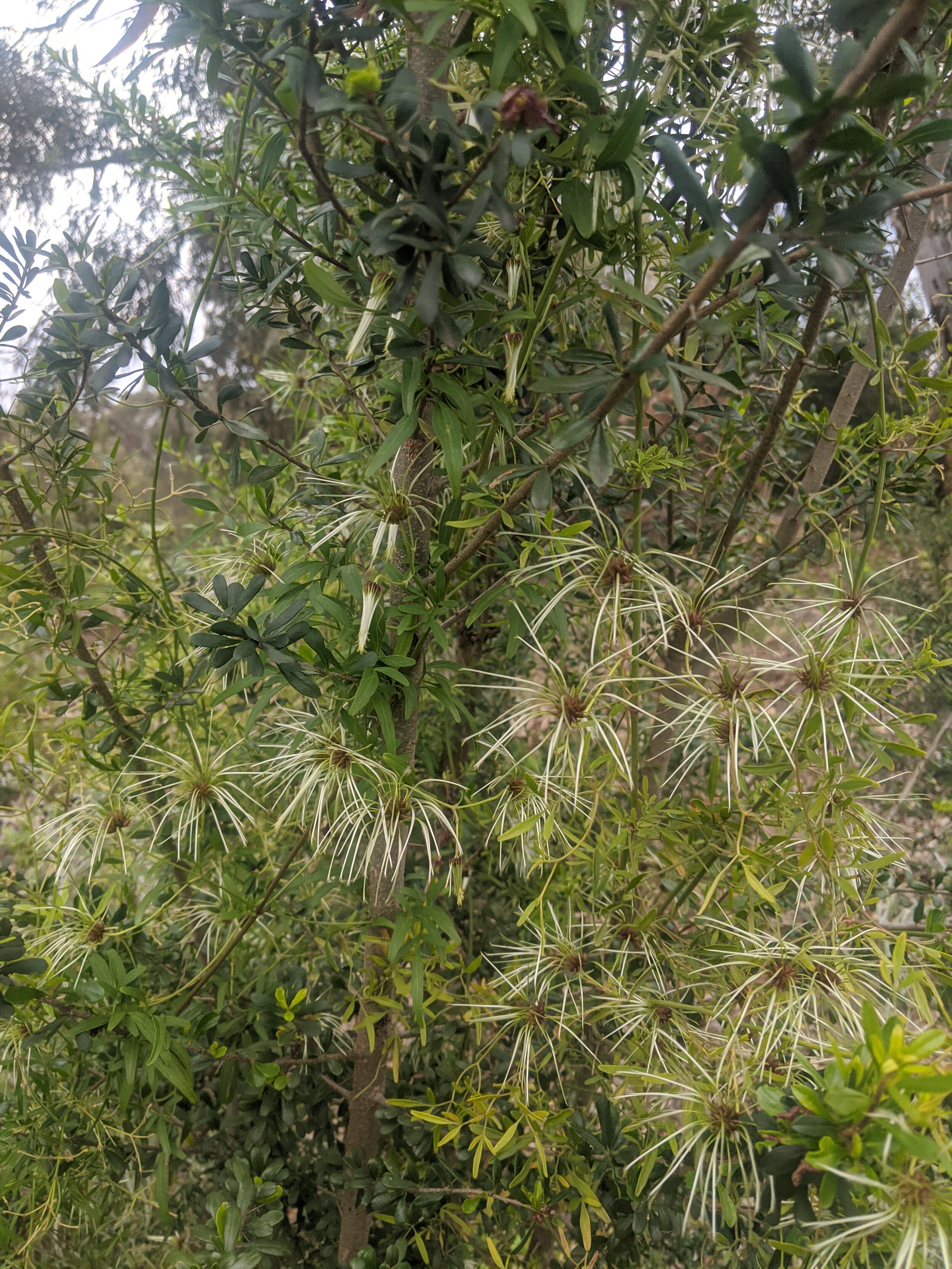

Clematis microphyllas, (Old Mans Beard) , Bababi Djinanang , Merri Creek Fawkner

Solanum mauritianum , (Bush Tobacco), Brunswick East.

Solanum mauritianum, Brunswick East Velodrome.

Wattle, Merri Creek Brunswick



Wattle, Merri Creek Brunswick
Sonaflora Melbourne
Four music scores and four sound works created using plant species documented across various green spaces across the City of Melbourne during the first Covid 19 lockdown 2020. Sites included Westgate Bridge Park, The Botanical Gardens and various parts of Royal Park including the native grassland circle area.
The works are presented as music scores created using various components of plant structure and growth algorithms.
I have included some documentation of site and process along with the scores and music and a small explanation of how each score was created.
The first sound file is the sonification of the music score combined with a field recording taken form the site of the plant, the second sound file is the sonification of the music score without the field recording to enable a closer focus on sonic structure.




This score splits the growth into a left and right hand side which correspond to the left and right hand audio channels, (best results though headphones). The vertical axis represents time and the horizontal axis represents a mirrored pentatonic scale starting from C1 in the Center and working across 4 octaves as it grows across the page. Recorded with Synthstrom Deluge and Elektron Digitone August 2020.
Bell Miner field recording - Melbourne Botanical Gardens




Huachaca Agave - Botanical Gardens
The tones are a series of slowly evolving tones mapping the growth of the Agave from the core to the outer sections. The field recordings overlaid in audio file 2a include some Bell Miners or Bellbirds, avian specialists in spatialized performative sonification of territory. Recorded on Synthstrom Deluge and ASM Hydrasynth, August 2020.
This score uses the growth nodes of Casuarina pine needles to create a series of interlocking percussive talas or drum cycles. I used seven needles and assigned different percussive sounds to each one. The first sound file 3a incorporates field recordings of honeyeaters recorded nesting within the Casuarina trees on the edge of the native grass circle in Royal Park. Recorded August 2020 on Synthstrom Deluge.




This score is quite similar in construction to 1a and again has split the growth and resulting sonification into a left and right hand channel. Recorded on Synthstrom Deluge and Elektron Digitone, August 2020.
Supported by the
City of Melbourne
COVID 19 Arts Grants
Moon Scores
Commissioned by Queensland University Art Gallery for the Music of the Spheres group exhibition 2020
A - Jupiter B - Neptune C- Venus

System Garden Plant Scores, commissioned by Ian Potter museum for The Score group exhibition 2018.
Ficus Carica, Echinocactus and Aluadia Procera are held in the Art Gallery of Western Australia permanent collection.
The AGWA commissioned three soundworks based on the graphic scores. The scores and soundworks where included in The Botanical / Beauty and Peril group show 2019.
images in order ; Ficus Damaropsis, Untitled, Ficus Carica, Pachycerous Pringlei, Echinocactus Grisonii, Untitled.


Dylan Martorell explores the relationship between organic form and structure in diagrammatic line drawings which take plants as the basis for musical scores.Coming out of a background in improvisational music , Martorells impetus for this ongoing work was a desire to challenge his practice by imposing a system of strict parameters. In some of his scores the shape of a leaf is plotted onto a grid, the horizontal scale representing sound, the vertical time. Different points on the leaf are studded with coloured dots which function as musical markers. In other drawings, circular forms representing patterns of plant growth are similarly plotted onto graphs. For The Score,


Martorell has created a new series of drawings based upon plants in the University of Melbourne’s System Garden. In one,the familiar three-to-five-lobed leaf of Ficus Carica, the common fig, is notated as a series of concentric circles traversed by radiating lines. At the bottom of each drawing is a system of notation, which in some drawings is based upon frequencies, and in others resembles tablature, with the two lines of squares indicating a traditional keyboard. These drawings can be performed by selecting a colour and following the corresponding series of dots and drawing to the outside.

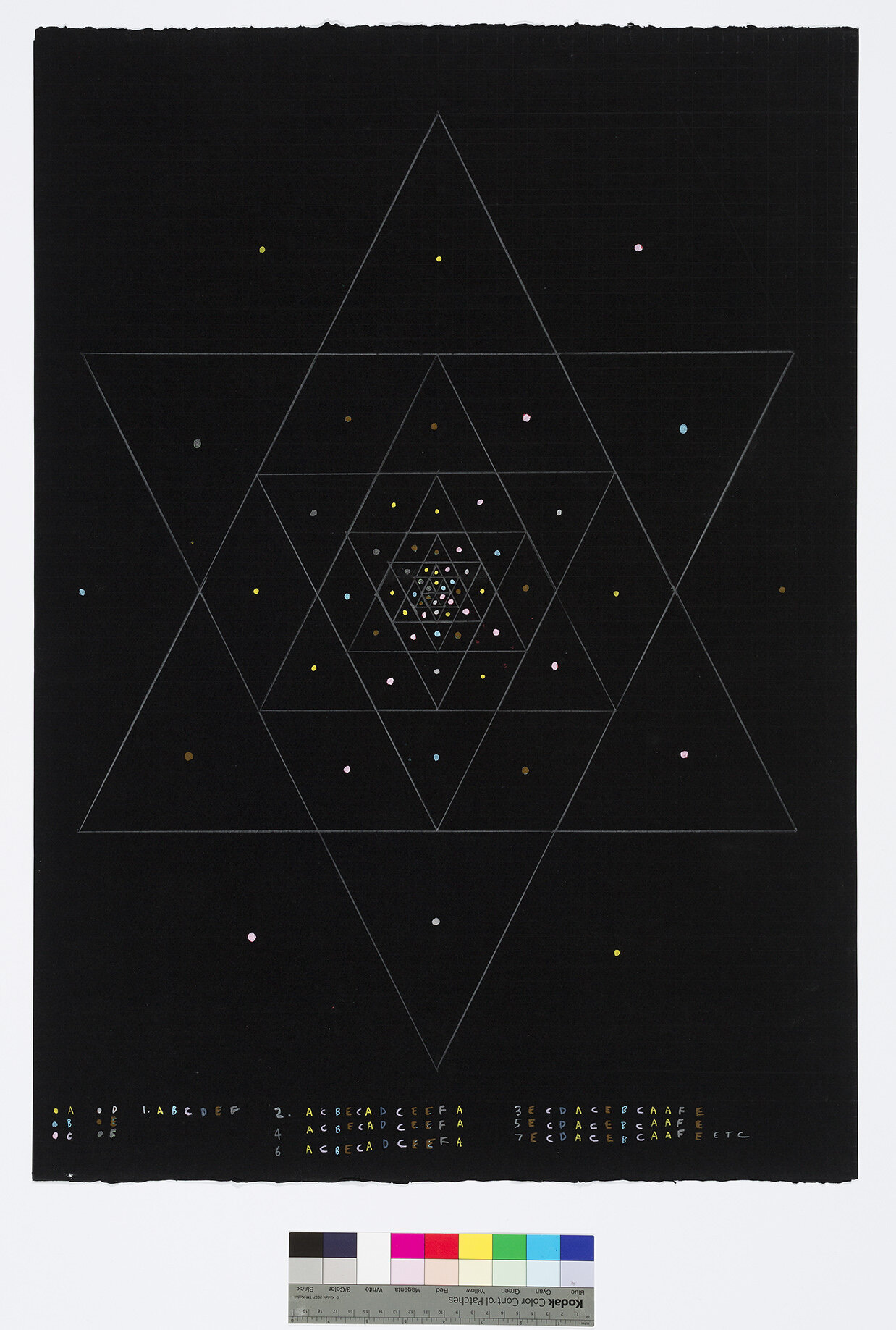
As part of the performance program accompanying The Score, Martorell and a group of musicians will stage a performance of these scores within the groundsof the System Garden. Surrounded by the plants which provided the structure of the music, Martorell will lead his audience through a cycle of formal translations from source object, to drawing, to sculpture, to music , and back to object again.
Fraxinus Ash recording Project
Musicians - Dylan Martorell And James Rushford
Audio Engineering - Joe Talia
Score A - Fraxinus Ash , Royal Park, Melbourne, VIC Score B - Gumnut Cluster, Royal Park , Melbourne , VIC
Score C - Lawson Fern , Blue Mountains NSW



Umbel Ballits Graphic Scores
Craft Victoria -


Modes of nodes
Modes of representation can vary greatly, and can open up the world to new forms, ideas, theories and phenomena that are greater than their inspiration, or at least far removed from the original concept/form that the representation hoped to represent. The form of scores as biological sketches as well as musical composition and abstract art opens many windows. Also their connection to the geodesic and dymaxion Architecture of Buckminster Fuller, who put the Geometric makeup of the macro and molecular into sensible design. The forms of Dylan's composition have comparison here, and indeed to other representations of the micro and molecular systems of nature.


Buckminster Fuller and others of his ilk have often looked at the geometry of a natural form in a stagnant state when mapping it out into architectural and engineering projects (not to say he and others have not looked at nature as a fluid form), but the fluidity and rhythm of nature is paramount to its form and is, in a sense, its form. Indeed, movement is the form of nature, one of the resonances of this movement is sound, and it is both an aural and visual resonance. I remember being intreegued (big pun) when reading the secret life of plants, by (not sure actually if it's that touched on in the book, but it was defiantly a main trail of thought in my mind) the time scale of plants, this drone existence is one to be envied, it is one that is easier or more experiential for us to fell and explore through sound, and in Dylan's case visual representations of sound. Plants indeed do this through their passionate murmurs and earth rumbling growth spurts. The aural range of plants in a time scale is far superior to that of any fauna, including man. Much of sound/music focuses on a linear moving forward, not on the floral branching out and slow growth, it is something to take on in composition and listening to sound, for instance, that beats can be decades apart. This being the case for ye olde trees, or that that fungi (can't remember his/her name) that spreads for miles, could make bleeps of joy suburbs away.


From the cracking of branches to the crystalline growth and symphony of photosynthesis plants also have an anthemic happy hardcore of their time frame, this is hard to hear in real time. If it was amplified and speed up, it would I think take on a jagged posi-techno glacial feeling.
Machines and plants share an alien and robotic identity in our view of them. It is a humanising in a way, but it is also above this, as some higher understanding be it spiritual or post humanist, non animalistic. In that machines take human form, but pose some kind of super threat, like higher beings or aliens. Plants also have been viewed like this, for example day of the triffids, or little shop of horrors. Also there is something that links techno/electronic music to plant life, there is the view of space and time as a similarity of drug use and plant time/space. But aside from the cultural connections, there are also the cycles of electronic music in relation to plant cycles. The sameness of micro chips and root systems, and time expanding relations of repetition in relation to the time span of much of plant life. This is surely part of the appeal of out door raves/ doofs, being one with nature, with plants.
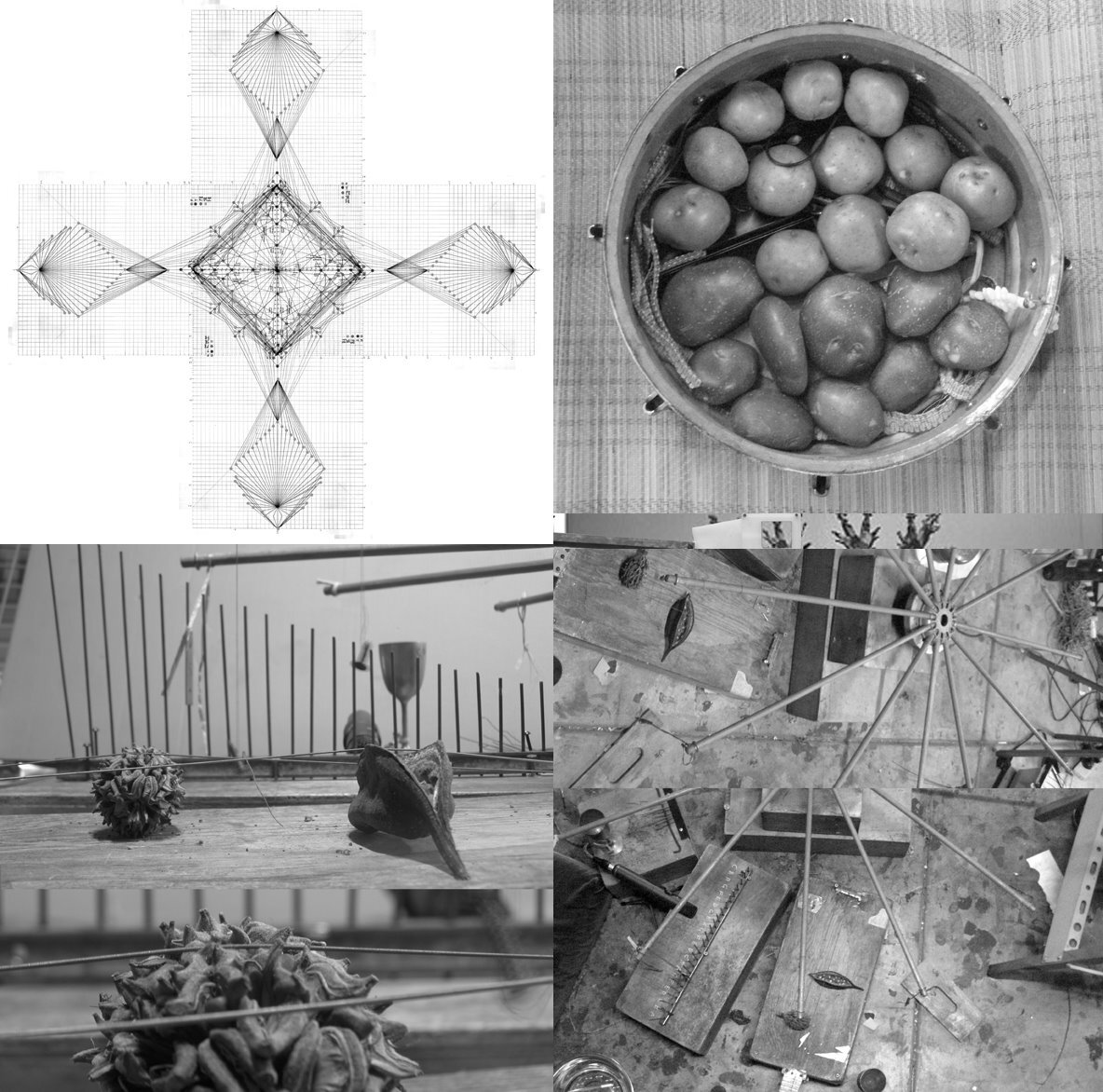
The dew drops on leaves at a different speed add a poppy dub beat (little pun). Plants are so a part of culture that they have their points of cringe, be it airy and hippy or through the standardisation of consumable vegetable material. But the exploration of plants is something that is deep and without ends to discover. This can be approached in a clinically scientific way, or more experimentally. Both in doses is probably the best way. The sound world of plants is quite an abstract space for exploration.

